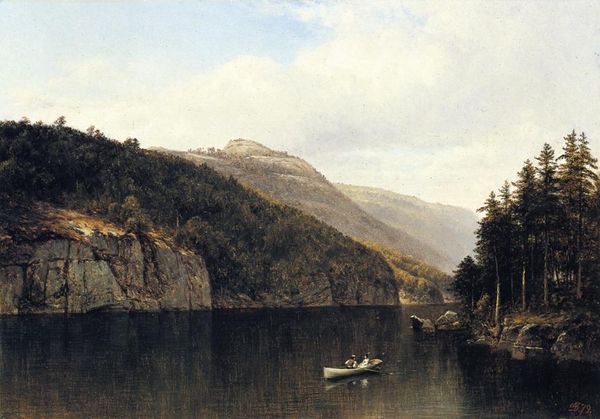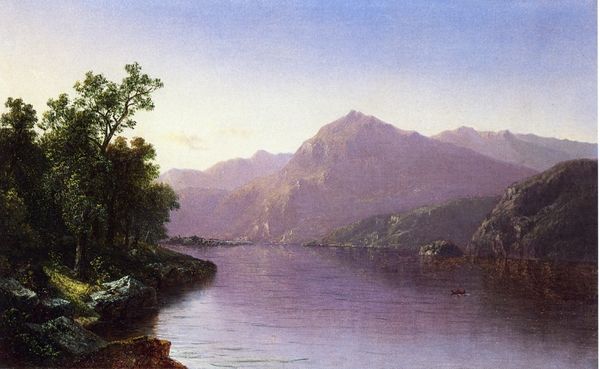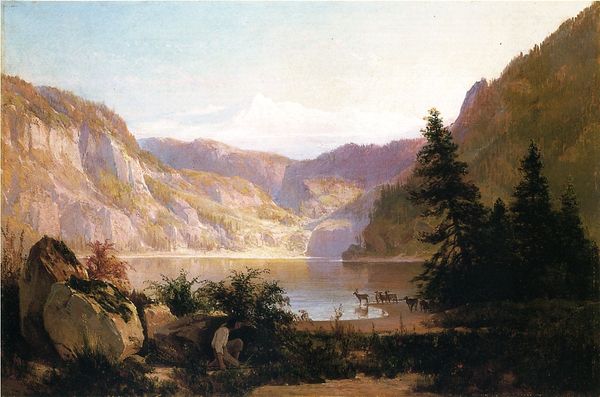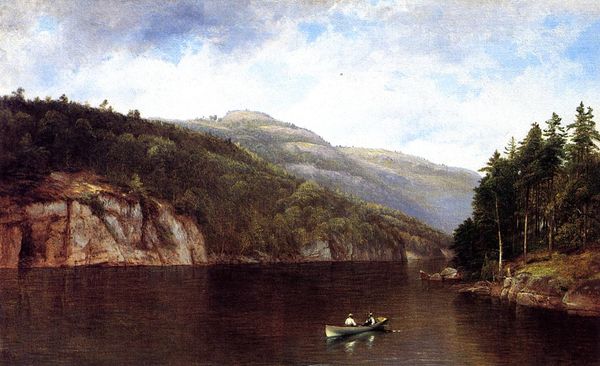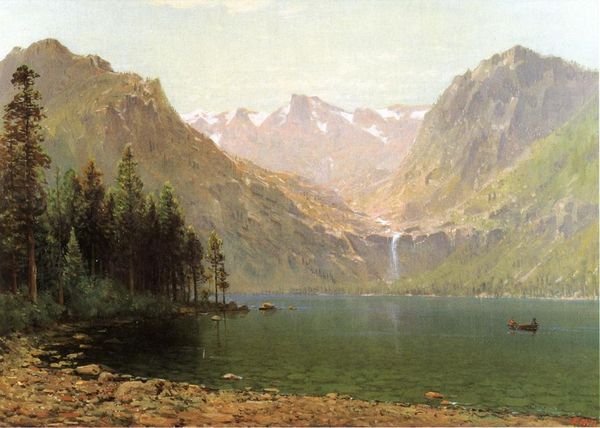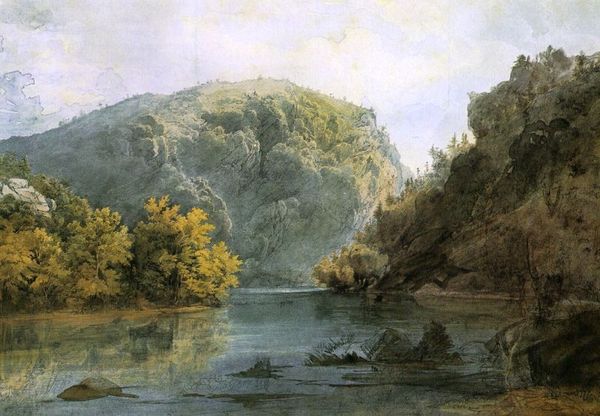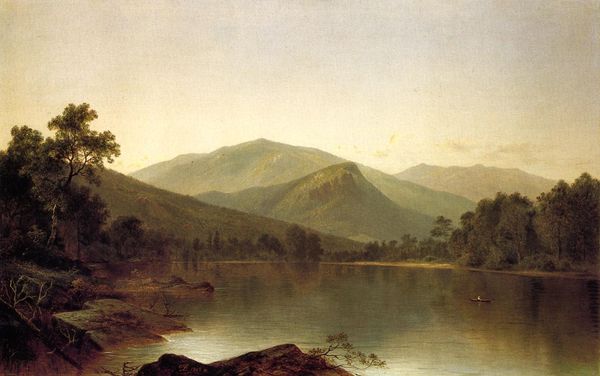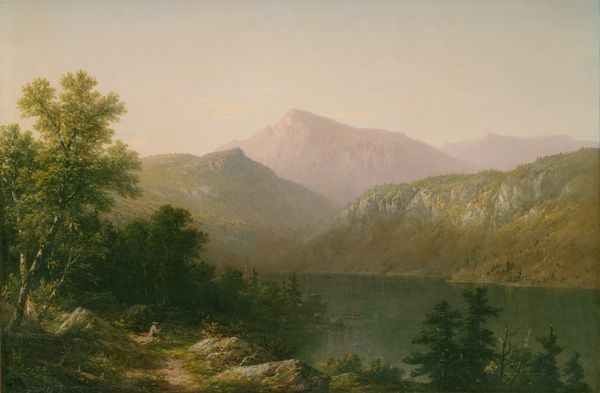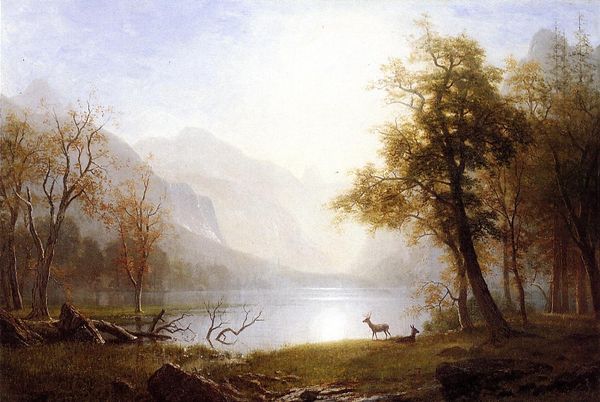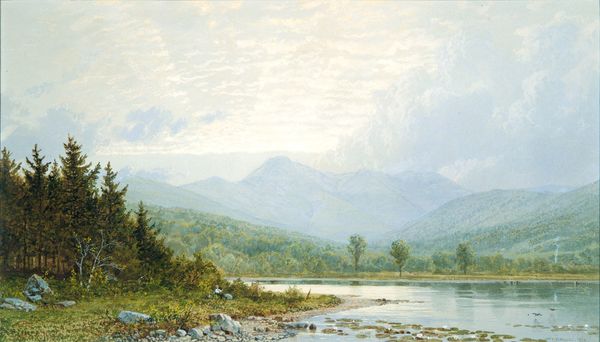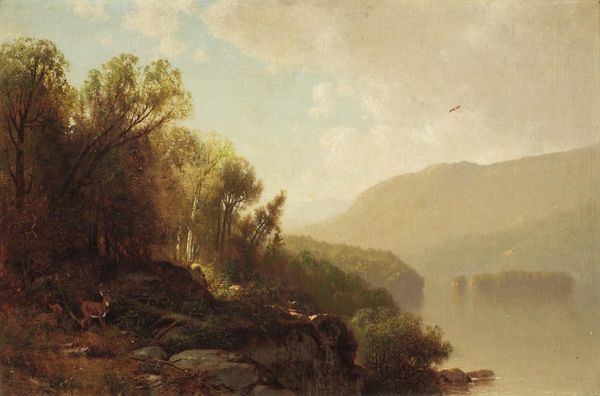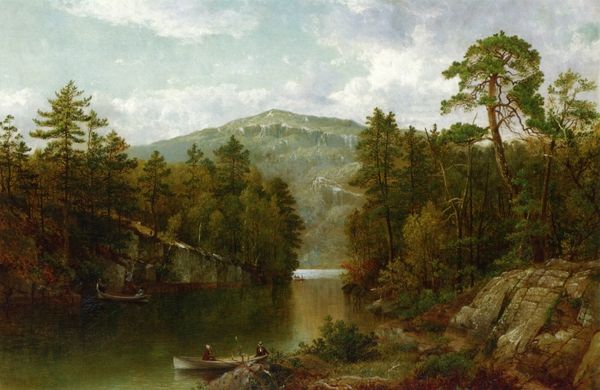
painting, oil-paint
#
sky
#
painting
#
landscape
#
oil-paint
#
landscape
#
river
#
landscape photography
#
mountain
#
hudson-river-school
#
water
#
cityscape
#
realism
Copyright: Public domain
Curator: I’m immediately struck by the subdued palette; it feels so still, so contemplative. Editor: Well, let's delve into this artwork further. This is David Johnson’s “Eagle Cliff, Franconia Notch, New Hampshire,” dating back to 1864. Johnson, a prominent figure associated with the Hudson River School, masterfully uses oil paint to bring this landscape to life. Curator: Oil paint feels particularly relevant here, doesn't it? Given its tradition. The textures almost mimic the geological layers, I'd be interested in his approach to layering and blending--did he build up strata of pigment the way nature builds up mountains? The materiality gives such weight. Editor: The imagery of Eagle Cliff certainly carries its weight, quite literally, I think. Cliffs have a historical significance representing challenges or obstacles, while eagles have long symbolized power, freedom, and even divine inspiration. Do you see this landscape echoing any particular meanings or values relevant to its time, especially during the Civil War? Curator: The choice of representing an undisturbed landscape when America was fractured resonates deeply. These paintings would function, in their own way, as commodities traded during a deeply destabilizing social crisis. How was Johnson circulating works and materials within the changing marketplace? Editor: The enduring appeal of nature provides solace and reminds one of a constant, maybe even suggesting reconciliation is possible. Water is reflective, so we look for likeness, maybe continuity even. In this scene, it is almost like mirroring heaven on earth; a familiar theme during periods of social unrest. Curator: Right. Thinking about the societal function of painting at this time is important here, particularly the patronage system that upheld these idealized scenes during a very turbulent moment in America's industrial development. These pristine images served as counterpoints to realities for many people. Editor: A contrast for sure. Overall, Johnson's choice of Eagle Cliff and his meticulous approach with oils encapsulate so much about America in 1864. Curator: And viewing it today reminds us of the ongoing intersection of material realities, labor, and national image building. Editor: Precisely; it prompts us to see not just what is depicted but what that imagery represented and continues to mean.
Comments
No comments
Be the first to comment and join the conversation on the ultimate creative platform.
